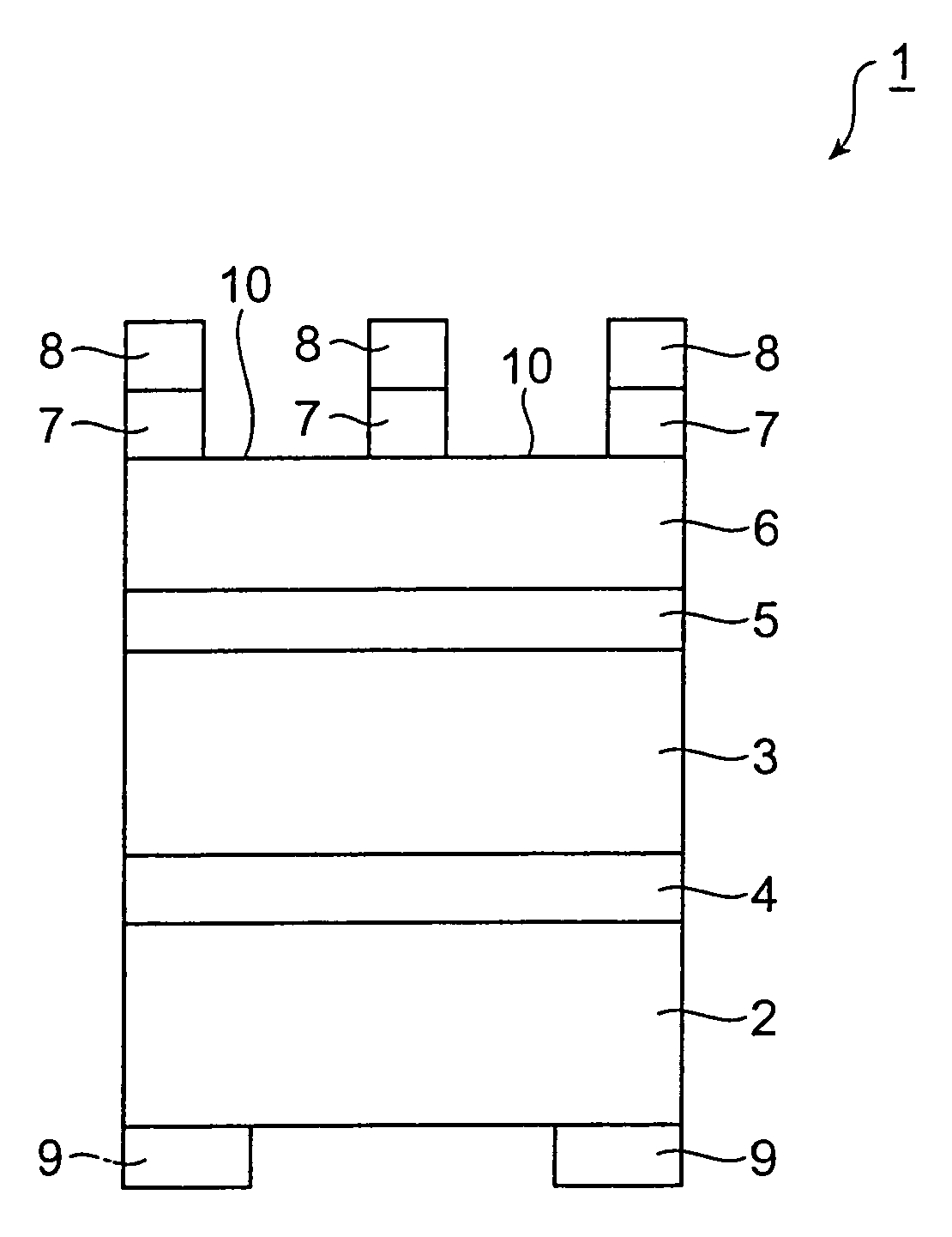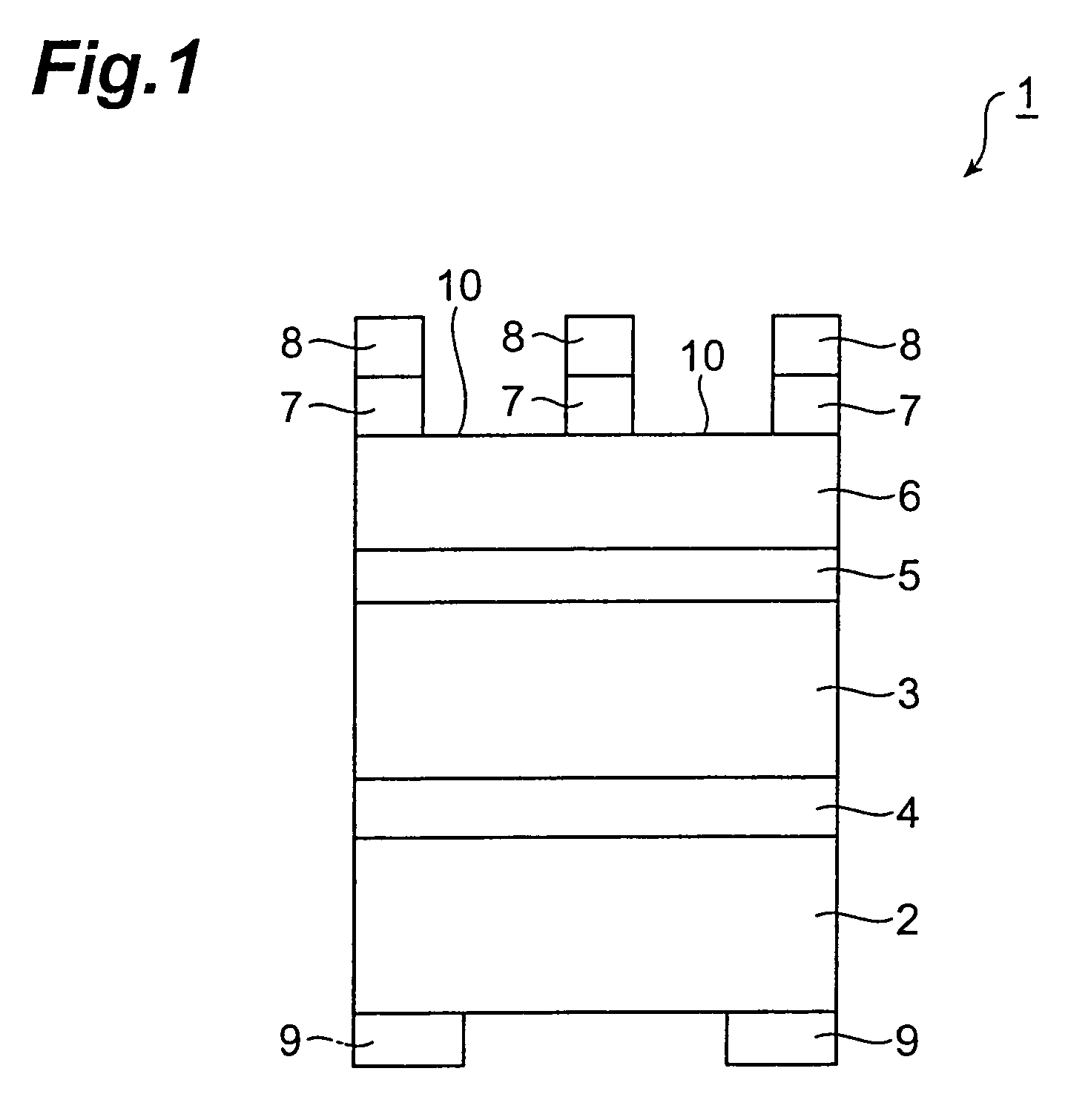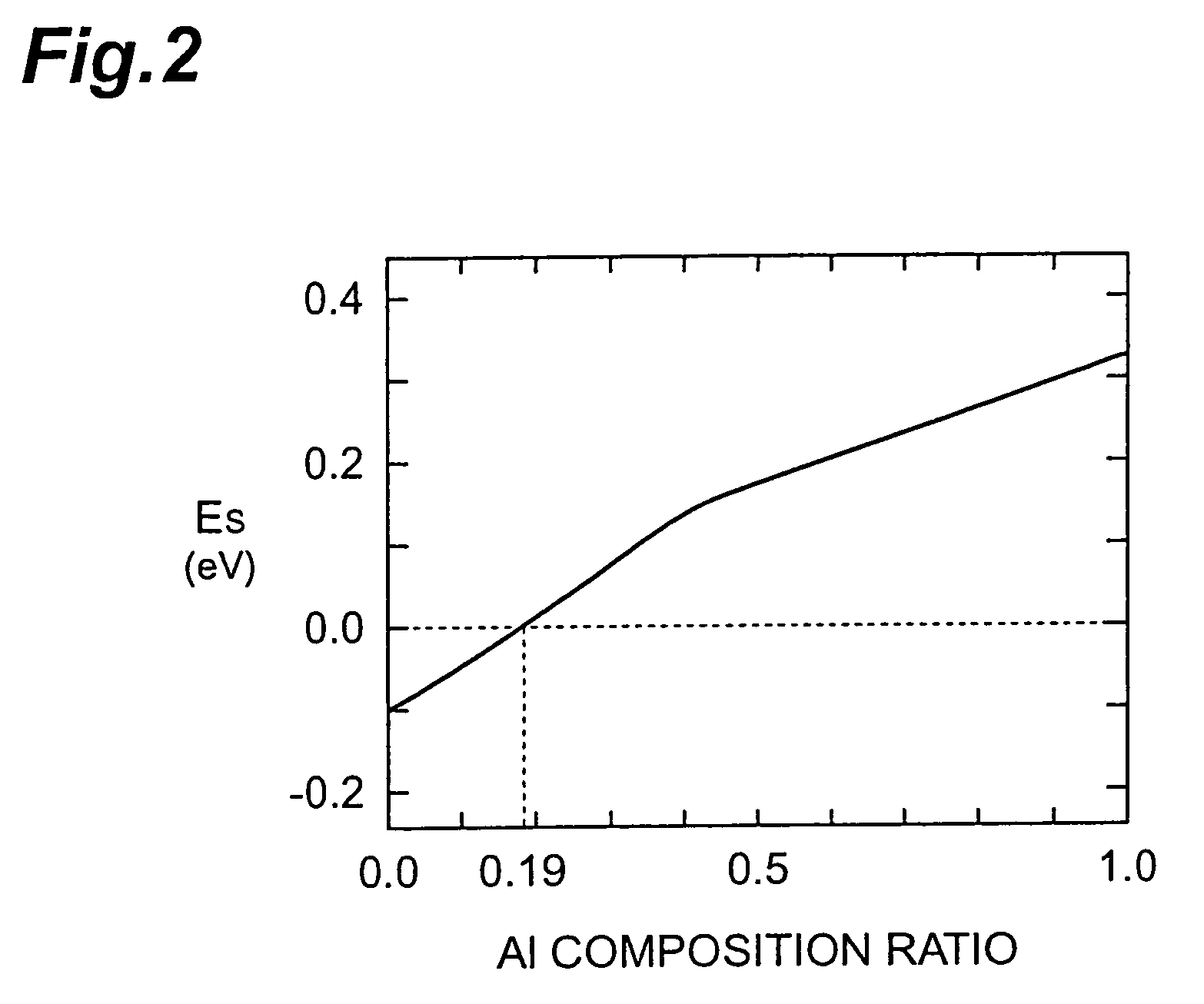Semiconductor photocathode and photoelectric tube using the same
- Summary
- Abstract
- Description
- Claims
- Application Information
AI Technical Summary
Benefits of technology
Problems solved by technology
Method used
Image
Examples
Embodiment Construction
[0037]The preferred embodiments of the present invention will be explained below on the basis of the drawings. Note that the same elements will be given the same reference numerals, and repetitive explanation will be omitted.
[0038]FIG. 1 is a diagram showing a semiconductor photocathode according to the first embodiment.
[0039]The semiconductor photocathode 1 shown in this figure comprises: a p+-type semiconductor substrate 2 made of GaSb; and a p−-type light absorbing layer 3 made of InAsSb.
[0040]A p+-type hole blocking layer 4 that is formed between semiconductor substrate 2 and light absorbing layer 3 has a wider energy band gap than that of light absorbing layer 3 and is made of AlGaSb.
[0041]Further, a p−-type hole blocking layer 5 of AlGaSb is formed on light absorbing layer 3, and a p−-type electron emitting layer 6 of GaSb is formed on hole blocking layer 5. An n+-type contact layer 7 of GaSb is formed on the electron emitting layer 6. This contact layer 7 and electron emittin...
PUM
 Login to View More
Login to View More Abstract
Description
Claims
Application Information
 Login to View More
Login to View More - R&D
- Intellectual Property
- Life Sciences
- Materials
- Tech Scout
- Unparalleled Data Quality
- Higher Quality Content
- 60% Fewer Hallucinations
Browse by: Latest US Patents, China's latest patents, Technical Efficacy Thesaurus, Application Domain, Technology Topic, Popular Technical Reports.
© 2025 PatSnap. All rights reserved.Legal|Privacy policy|Modern Slavery Act Transparency Statement|Sitemap|About US| Contact US: help@patsnap.com



